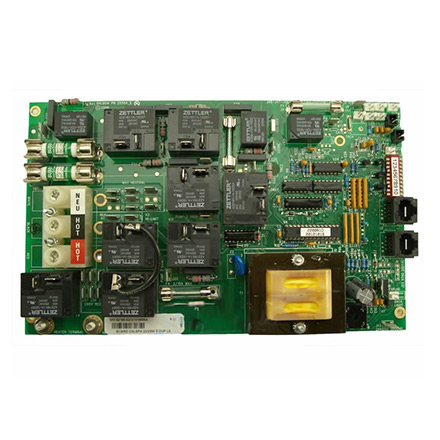Types of Tinted Glass Enhancing Aesthetics and Functionality
Tinted glass, an innovative architectural and design element, has become increasingly popular in various domains, from residential to commercial spaces. It not only imparts an aesthetic appeal but also offers practical benefits such as energy efficiency, privacy, and UV protection. This article delves into the different types of tinted glass available in the market.
1. **Solar Tinted Glass** Solar tinted glass, also known as heat-rejecting glass, is designed to reduce the amount of heat transmitted through the glass. It helps to minimize solar heat gain, thereby reducing cooling costs during warmer months. The tint is achieved by adding metal or metal oxide coatings during the manufacturing process, which reflects sunlight and blocks infrared and ultraviolet (UV) rays.
2. **Reflective Tinted Glass** Reflective tinted glass, often used in high-rise buildings, features a highly reflective surface that reflects light and heat. This type of glass can significantly reduce glare and provide enhanced privacy while still allowing natural light to filter through. Its mirrored appearance adds a touch of sophistication to any structure.
3. **Laminated Tinted Glass** Laminated tinted glass is made by sandwiching a layer of polyvinyl butyral (PVB) between two layers of glass, with a tint added to the PVB layer. This type offers superior safety and security, as it holds together if shattered. It's ideal for areas prone to earthquakes or high-traffic zones It's ideal for areas prone to earthquakes or high-traffic zones

It's ideal for areas prone to earthquakes or high-traffic zones It's ideal for areas prone to earthquakes or high-traffic zones
 types of tinted glass
types of tinted glass.
4. **Colored Tinted Glass** For those seeking a more decorative touch, colored tinted glass offers a range of hues to match any design scheme. From subtle shades to bold tints, these glasses can transform a space visually. They are commonly used in interior design elements like partitions, cabinets, and backsplashes.
5. **Photochromic Tinted Glass** Photochromic glass automatically darkens when exposed to sunlight, providing dynamic shading without the need for blinds or curtains. It's an excellent choice for eyewear and automotive applications where light conditions frequently change.
6. **Electrochromic Tinted Glass** Electrochromic glass, another advanced variant, changes its tint in response to an electric current. It allows users to control the level of light transmission, providing flexibility and energy savings in buildings.
In conclusion, tinted glass offers a multitude of options to balance aesthetics, functionality, and energy efficiency. Each type caters to specific needs, making it a versatile material in architecture and design. Whether it's for privacy, energy conservation, or aesthetic enhancement, tinted glass solutions continue to revolutionize the way we interact with our built environment.


 It's ideal for areas prone to earthquakes or high-traffic zones It's ideal for areas prone to earthquakes or high-traffic zones
It's ideal for areas prone to earthquakes or high-traffic zones It's ideal for areas prone to earthquakes or high-traffic zones types of tinted glass.
4. **Colored Tinted Glass** For those seeking a more decorative touch, colored tinted glass offers a range of hues to match any design scheme. From subtle shades to bold tints, these glasses can transform a space visually. They are commonly used in interior design elements like partitions, cabinets, and backsplashes.
5. **Photochromic Tinted Glass** Photochromic glass automatically darkens when exposed to sunlight, providing dynamic shading without the need for blinds or curtains. It's an excellent choice for eyewear and automotive applications where light conditions frequently change.
6. **Electrochromic Tinted Glass** Electrochromic glass, another advanced variant, changes its tint in response to an electric current. It allows users to control the level of light transmission, providing flexibility and energy savings in buildings.
In conclusion, tinted glass offers a multitude of options to balance aesthetics, functionality, and energy efficiency. Each type caters to specific needs, making it a versatile material in architecture and design. Whether it's for privacy, energy conservation, or aesthetic enhancement, tinted glass solutions continue to revolutionize the way we interact with our built environment.
types of tinted glass.
4. **Colored Tinted Glass** For those seeking a more decorative touch, colored tinted glass offers a range of hues to match any design scheme. From subtle shades to bold tints, these glasses can transform a space visually. They are commonly used in interior design elements like partitions, cabinets, and backsplashes.
5. **Photochromic Tinted Glass** Photochromic glass automatically darkens when exposed to sunlight, providing dynamic shading without the need for blinds or curtains. It's an excellent choice for eyewear and automotive applications where light conditions frequently change.
6. **Electrochromic Tinted Glass** Electrochromic glass, another advanced variant, changes its tint in response to an electric current. It allows users to control the level of light transmission, providing flexibility and energy savings in buildings.
In conclusion, tinted glass offers a multitude of options to balance aesthetics, functionality, and energy efficiency. Each type caters to specific needs, making it a versatile material in architecture and design. Whether it's for privacy, energy conservation, or aesthetic enhancement, tinted glass solutions continue to revolutionize the way we interact with our built environment.